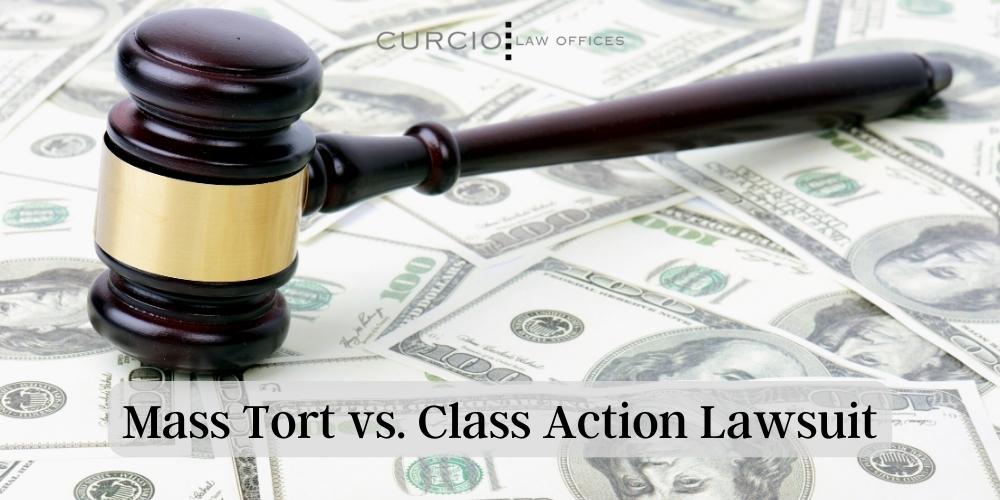Insights right into the Future FinTech Class Action Lawsuit: Stay Informed
Wiki Article
Checking Out Course Action Lawsuits: What You Need to Know
Class activity lawsuits have actually come to be progressively widespread in today's lawful landscape, with people joining pressures to look for remedy against firms and organizations. In this conversation, we will explore the ins and outs of class action suits, shedding light on their meaning, the demands for declaring, and the potential benefits and downsides involved.The Meaning of Class Action Claims
A course action suit is a legal activity filed by a group of people who have comparable insurance claims against an offender. Class activity claims are normally brought when the number of possible complainants is too big for individual suits to be practical.Among the crucial aspects of a course action lawsuit is that the lead complainant, likewise referred to as the course representative, stands for the rate of interests of all the course members. The court appoints the lead complainant based on their ability to relatively and properly stand for the class. The lead plaintiff works very closely with the class activity lawyer to construct a strong case and look for settlement or various other solutions in support of the whole course.
In order for a class action legal action to continue, the court must accredit the course. This implies that the court figures out that the lawsuit fulfills certain demands, such as numerosity (a large sufficient variety of course members), commonness (typical concerns of law or reality), typicality (the insurance claims of the lead complainant are regular of the course), and adequacy of depiction (the lead complainant and class advice can standing for the course's passions) When the class is accredited, the claim can relocate forward, and any judgment or negotiation reached will put on all course participants unless they select to opt-out.
Course activity lawsuits serve an important function in supplying access to justice for people that might not have the sources to pursue their cases individually. They also promote efficiency in the legal system by settling comparable claims right into a single activity, decreasing the burden on both the court and the celebrations involved.
Demands for Filing a Class Action Claim

Another demand is that the class needs to be adequately countless. The specific variety of class members called for may differ depending upon the territory and the nature of the instance. It is typically expected that the course should be big sufficient that signing up with all the specific plaintiffs into a solitary legal action is a lot more effective than having numerous separate lawsuits.
Additionally, it is necessary that the class representative, who is the specific or entity bringing the legal action in support of the course, has normal claims and defenses to those of the class participants. The rep must also be able to sufficiently and relatively represent the passions of the entire course.

Benefits and Disadvantages of Course Action Lawsuits
Class action claims use both benefits and drawbacks for complainants and offenders entailed in the legal process. On the one hand, among the significant benefits of course action legal actions is that they provide a affordable and effective method for individuals with comparable insurance claims to seek justice collectively. By combining countless similar instances into one lawsuit, course actions enhance the lawful procedure and save time and resources for both offenders and plaintiffs.Another benefit of class activity claims is that they have a peek at these guys enable people with minimal sources to seek payment for their problems. In instances where the potential recovery is tiny, private lawsuits might not be financially feasible. However, by signing up with pressures in a course activity, plaintiffs can merge their sources and boost their chances of obtaining a reasonable resolution.
In addition, course activities can promote social modification by holding firms accountable for their actions. By accentuating extensive transgression or defective products, course actions can press firms to transform their methods, boost product safety, or implement reforms.
Nevertheless, class activities also have disadvantages. One possible disadvantage is that specific plaintiffs might have limited control over the lawsuits process and the ultimate end result of the situation. The lead plaintiffs and their attorneys usually make essential decisions in behalf of the entire class, which may not constantly straighten with the private rate of interests of each class participant.
Additionally, course activities can be prolonged and time-consuming, usually taking years to reach a resolution. The complexity and dimension of these lawsuits can bring about hold-ups and prolonged litigation, which can be irritating for both defendants and plaintiffs seeking a prompt resolution.
Steps Associated With a Class Action Suit
The process of a course activity claim typically begins with the identification of a possible course and the declaring of an issue. When a team of people that share similar claims against an offender is identified, the lead plaintiff, or class representative, files a grievance in support of the whole class. This issue lays out the supposed wrongdoing and seeks problems or other alleviation for all members of the course.After the issue is filed, the court will certainly figure out whether the situation meets the demands for class qualification. These demands usually consist of numerosity (a big sufficient class), commonness (similar lawful claims), typicality (the lead complainant's claims are depictive of the class), and adequacy of representation (the lead plaintiff and their lawyer can effectively stand for the course's rate of interests)
If the court licenses the course, notice learn this here now is provided to all potential class members, providing the chance to opt-out if they want to pursue their very own individual cases - BioVie class action lawsuit. If an adequate variety of course participants continue to be, the case will proceed to the discovery phase, where both sides collect evidence and details pertinent to the cases
Adhering to discovery, the parties may take part in negotiation arrangements or continue to trial. If the situation mosts likely to trial and the course dominates, the court will identify the suitable damages or relief to be granted to the course members.
Recent Site Course Action Legal Actions
With a strong understanding of the actions associated with a class action legal action, it is check that currently important to examine some current site situations that have actually made a significant influence in the lawful landscape. Archer-Daniels-Midland class action lawsuit. These situations have not only shaped the method class action suits are carried out but have actually also caused modifications in numerous marketsOne such landmark case is the Volkswagen exhausts detraction, which resulted in the biggest class action negotiation in vehicle background. In 2015, it was exposed that Volkswagen had actually mounted software application in their vehicles to cheat discharges tests. This deceptiveness affected numerous customers worldwide, resulting in a course action legal action. The settlement gotten to in 2016 amounted to about $15 billion, compensating affected vehicle owners and penalizing on Volkswagen.
One more remarkable instance is the Johnson & Johnson talc lawsuit. Countless women filed suits against the company, asserting that their talc products triggered ovarian cancer. In 2018, a court awarded $4.7 billion in damages to 22 plaintiffs. This case elevated worries about the safety and security of talc and prompted Johnson & Johnson to customize their product labeling.
These recent landmark situations demonstrate the power of course activity lawsuits in holding companies accountable for their activities and seeking justice for afflicted individuals. They work as examples of just how course activity legal actions can cause considerable modifications and shield the rights of customers.
Conclusion
In conclusion, course action legal actions are a lawful system that allows a team of individuals to collectively look for justice for a common grievance. Recognizing the actions and demands involved in filing a course action suit is vital for individuals seeking to seek this lawful avenue.One of the crucial components of a class activity claim is that the lead plaintiff, additionally understood as the class representative, represents the passions of all the course members.In order for a course activity suit to proceed, the court should license the course. This suggests that the court determines that the legal action satisfies particular demands, such as numerosity (a large sufficient number of course members), commonness (typical concerns of regulation or reality), typicality (the claims of the lead complainant are common of the course), and competence of representation (the lead plaintiff and course advice are qualified of representing the class's passions) As soon as the class is licensed, the suit can move forward, and any type of judgment or settlement got to will apply to all class participants unless they select to opt-out.
The process of a class action legal action normally starts with the recognition of a possible course and the declaring of a complaint.
Report this wiki page